Japanese Baseball
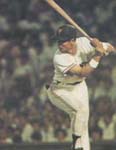
Oh Sadaharu
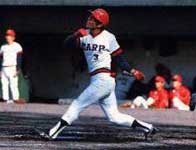
Kinugasa Sachio
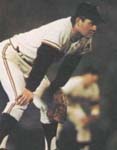
Nagashima Shigeo
Heading Across the Water
In recent years, some of Japan's stars have been trying their luck in the Major Leagues in the U.S. The first, Nomo Hideo, left the Kintetsu Buffaloes under a cloud to join the Los Angeles Dodgers, where he was a sensational success in his first season. His later seasons and the records of other pitchers to join him in the US, such as Irabu Hideki and Masato Yoshii were mixed.
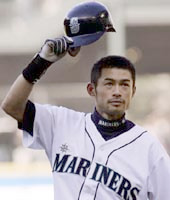 An obvious candidate for the first outfielder to try his luck in the Majors - in spite of his slight physique - was Suzuki Ichiro (known simply as Ichiro, photo) of the Orix BlueWave. One of the most consistent and popular players in the country, Ichiro won the batting title in the Pacific League in seven consecutive seasons (1994-2000). For several years, he was also the only Japanese player ever to have had more than 200 hits in a single season (a consistency he maintained in the U.S.).
An obvious candidate for the first outfielder to try his luck in the Majors - in spite of his slight physique - was Suzuki Ichiro (known simply as Ichiro, photo) of the Orix BlueWave. One of the most consistent and popular players in the country, Ichiro won the batting title in the Pacific League in seven consecutive seasons (1994-2000). For several years, he was also the only Japanese player ever to have had more than 200 hits in a single season (a consistency he maintained in the U.S.).
During a session spent at the Seattle Mariners' spring training camp in 1999, Ichiro let slip to the hordes of Japanese media following him that he didn't want to go back to Japan. He quipped that they'd better cut the 'unseemly' comment but his desire to get away from 'puro yakyu' and play somewhere where baseball can actually be fun was apparent - and widely reported. So it came as no real surprise when the Mariners paid some $13 million for the right to negotiate with Ichiro after the 2000 season finished. He eventually signed with the team (partly owned by Japanese company Nintendo) for a 3-year, $15 million contract. He joined fellow countryman Sasaki Kazuhiro, at the time the Japanese record holder for career saves, who won the league rookie of the year award in his first season with the Mariners. Other Japanese players among that wave who tried their luck (with mixed results) in the U.S. include Shinjo Tsuyoshi, Matsuzaka Daisuke, Oka Tomokazu and 'Mac' Suzuki Makoto.
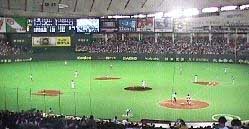
Inside Tokyo Dome
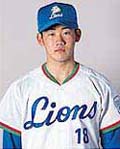
1999 rookie pitching sensations Matsuzaka Daisuke of the Seibu Lions
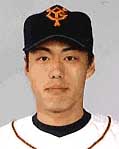
Uehara Koji of the Yomiuri Giants
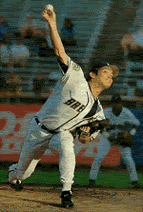
Nomo Hideo pitches for the Milwaukee Brewers, one of several major league teams he played with

Shinjo Tsuyoshi waves to the New York mets fans after hitting his first home run in the Major Leagues (Reuters)
Turning the clock back briefly...When they debuted in 1999, Matsuzaka Daisuke and Uehara Koji were the most eagerly awaited young pitchers in quite some time. Matsuzaka had been a pitching sensation at the previous year's high-school tournament, and when he joined the Seibu Lions suddenly attendance figures and TV audiences sky-rocketed. He finished his debut season with 16 wins and the Pacific League Rookie of the Year award, but in terms of performance he was out-pitched by Uehara, who won 20 games for the Giants in becoming Central League Rookie of the Year and winning the Sawamura Award for pitcher of the year. But over the years, it was Matsuzaka who proved to be the more effective and consistent of the two and came to be regarded as Japan's No.1 pitcher.
So it was all the more of a shock to the country when he too made the leap to the major leagues, with the Lions very reluctantly letting him go after the 2006 season. The staggering $50 million shelled out by the Boston Red Sox just to negotiate with him ensured that he would be one of the main focuses of the 2007 season. He had an up and down season but played his part in helping the Red Sox win another World Series. Credit for part of that success has also to be given to setup man Okajima Hideki, who joined the team at the same time as Matsuzaka and was widely regarded as being there mainly to help the star adjust to the new league. But "Okie" as he came to be known, had a phenomenal first season and his $2.5 million two-year contract was recognized as an incredible bargain.
Related content: check out our many profiles of Japan's top sports stars.

